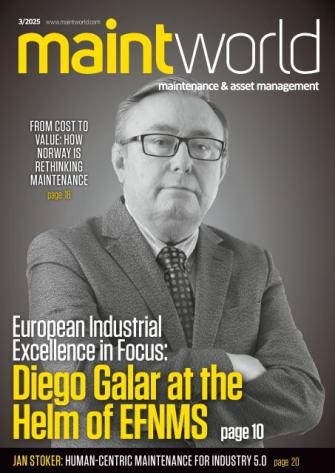Ensuring a safe work policy through proper follow-up on the job and improvement in the field
The focus on safe working is increasing. In addition to preventing economic, environmental and image damage, the human factor is becoming increasingly important. Awareness of working safely is high. Zero incidents is always and everywhere the goal, but actually securing this on the shop floor is unfortunately not always well organized.
The structured implementation of safety in the organisation starts with identifying the risks. For complex and also standard maintenance work, a Task Risk Analysis (TRA) must be carried out to ensure safe working. What are the risks and what mitigating measures can we implement to improve this?
Mitigate risks
Up-to-date asset data is a pre-requisite for developing effective risk mitigation measures on site. You must be able to rely on the actual information. But it is not a given. It regularly comes to light that the asset data and drawings are not up to date and not representing the actual situation in the field. The transfer of new data and its processing in the Enterprise Asset
Management (EAM) system is often a complicated process and often delivered too late. Incomplete 'Management of Change' is also regularly a cause of the lack of the latest updates.
So who knows what the latest version is for a proper ‘lock-out, tag-out, try-out procedure’ (LOTOTO)? And has asset coding in the field been updated? Simplification of processes and complete transfer of requested information deserves attention.
Ensuring safety
Ensuring safe working practices begins with work preparation. Assessing risks in advance and determining additional measures are important steps. On-site inspections and a task-risk analysis for more risky and complex work are necessary. Often shortcuts are made because of time pressure or lack of resources.
Most companies have LOTOTO procedures and work permits to ensure safety in place. The crux is proper handover and follow them in practice. An excess of "paper" detracts from the essentials and misses the point in handing over to the implementers.
Daily handover and supervision by an on-site supervisor or foreman are crucial to ensure that an LMRA (Last Minute Risk Analysis) is performed on the job site with production and performers. After all, are the risks and potential consequences really discussed in advance and are the right measures taken? In practice, boxes are often checked off too quickly.
After completion, the works performed must be delivered, monitored and evaluated. In practice, too little capacity is usually scheduled for this, so field checks are only partially done. Nevertheless, checking that the plant is effectively closed and working properly again will prevent new leaks or a failing startup. Close the Plan-Do-Check-Act circle.
Improve continuously
The final step to ensure continuous improvement on this matter: continuously look for simplification of procedures, such as the use of digital work permits. Conduct regular evaluations for improvement and involve the contractor, as an equal partner.
Lately, the shortage of experienced performers is increasing, and non-native speakers are being used more frequently. Preliminary discussions, targeted Toolbox Meetings, language proficiency checks and digital work packages with more visual information and less text have become a must. The manager should start the conversation on the shop floor. What causes someone to experience time pressure? Why did someone deviate from procedure? Was the transfer clear? Identify the real problem and stop work if performers prove insufficiently capable or do not keep appointments.
In short, show that you take safety seriously, that policies are consistently implemented. That way you create a culture where you alert each other and can be open about improvements. In doing so, you may have prevented the next incident.
Text and images: Laura van der Linde, Mainnovation







![EMR_AMS-Asset-Monitor-banner_300x600_MW[62]OCT EMR_AMS-Asset-Monitor-banner_300x600_MW[62]OCT](/var/ezwebin_site/storage/images/media/images/emr_ams-asset-monitor-banner_300x600_mw-62-oct/79406-1-eng-GB/EMR_AMS-Asset-Monitor-banner_300x600_MW-62-OCT.png)



